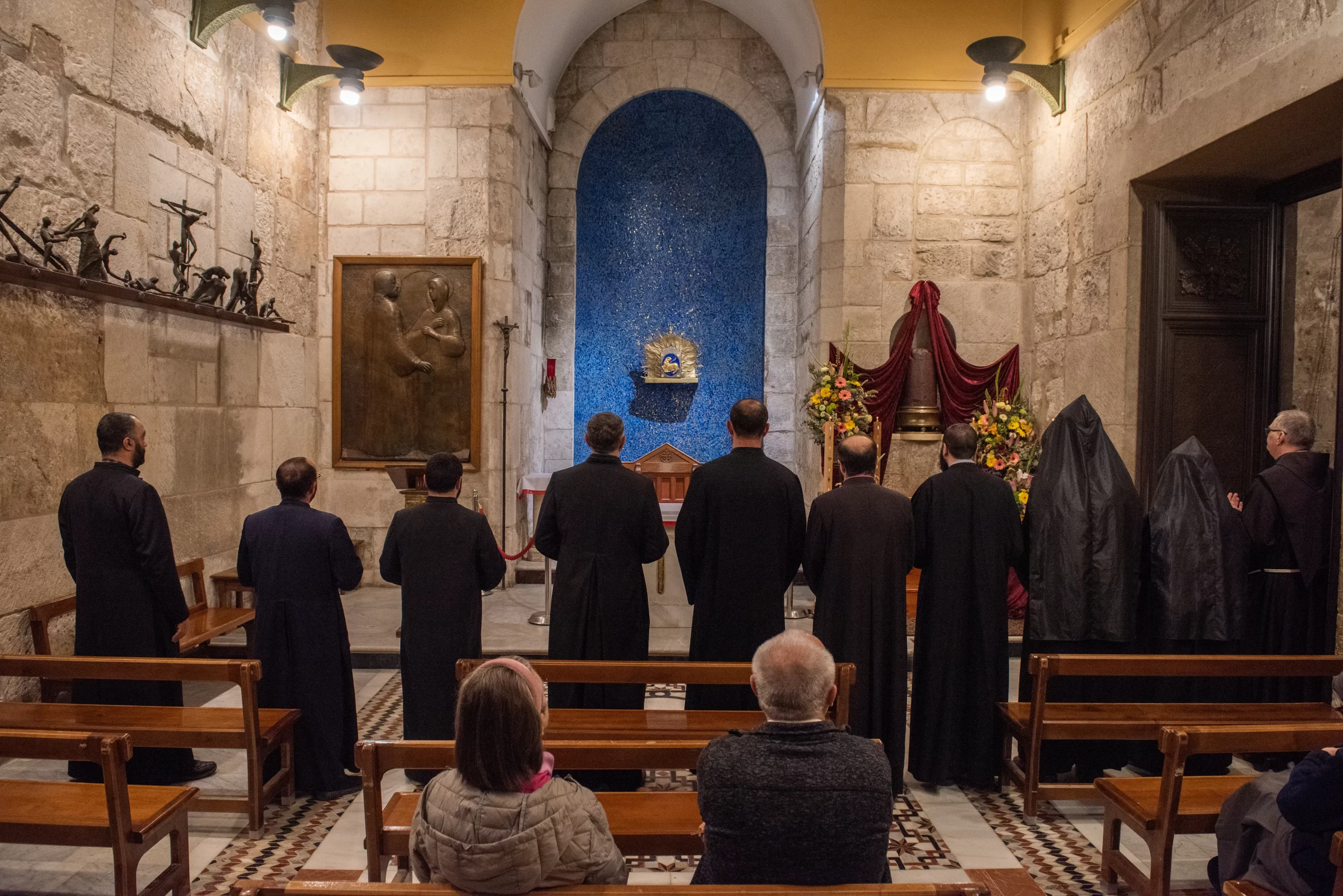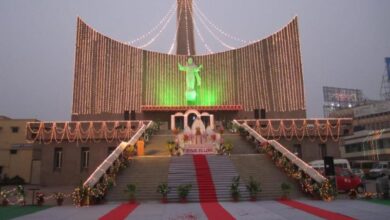Holy Wednesday in Jerusalem: Venerating the pillar of Christ’s flagellation
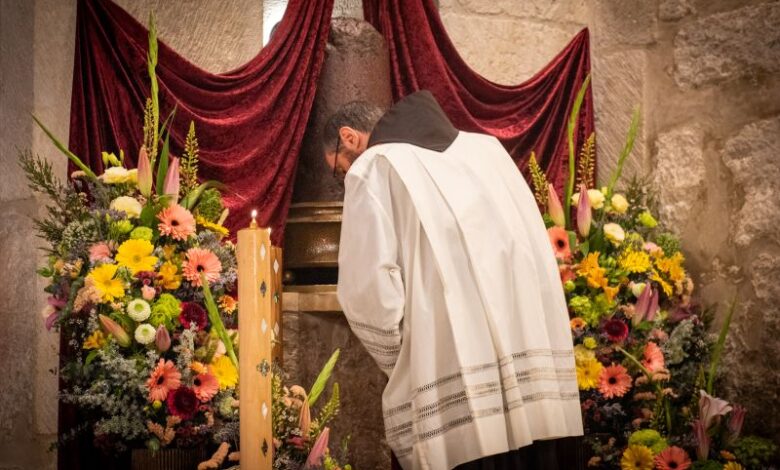
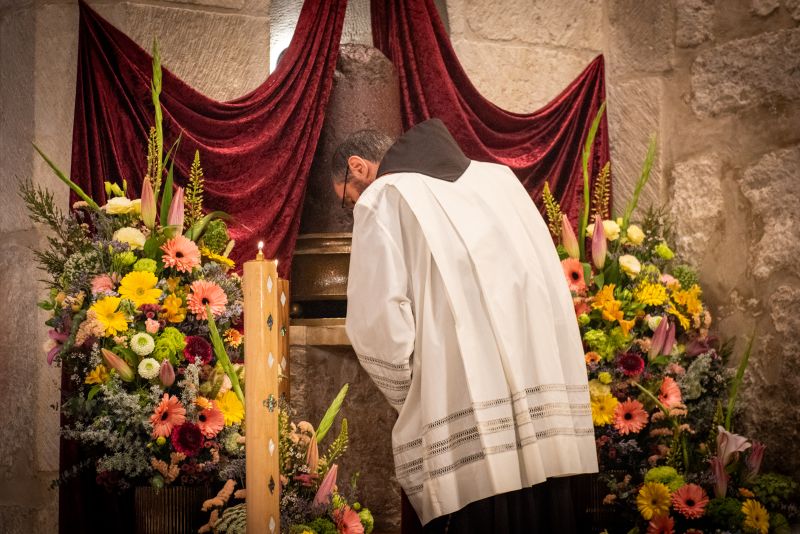 On Holy Wednesday, the friars of the Custody of the Holy Land venerated the column to which, according to tradition, Jesus was bound to be scourged. They prayed the station dedicated to the column during the daily procession that the Franciscans perform inside the Basilica of the Holy Sepulcher. At the end, they intoned the hymn “Columna Nobilis” and then, one by one, they performed an act of veneration. March 27, 2024. / Credit: Marinella Bandini
On Holy Wednesday, the friars of the Custody of the Holy Land venerated the column to which, according to tradition, Jesus was bound to be scourged. They prayed the station dedicated to the column during the daily procession that the Franciscans perform inside the Basilica of the Holy Sepulcher. At the end, they intoned the hymn “Columna Nobilis” and then, one by one, they performed an act of veneration. March 27, 2024. / Credit: Marinella Bandini Jerusalem, Mar 27, 2024 / 15:00 pm (CNA).
In Jerusalem on Holy Wednesday, the friars of the Custody of the Holy Land venerate the two stones that, according to the Gospel of Luke, were stained with the blood of Jesus during his passion.
The first stone is venerated at the Basilica of the Agony, which stands at the place where Jesus withdrew to pray after the Last Supper in an orchard known as Gethsemane at the foot of the Mount of Olives.
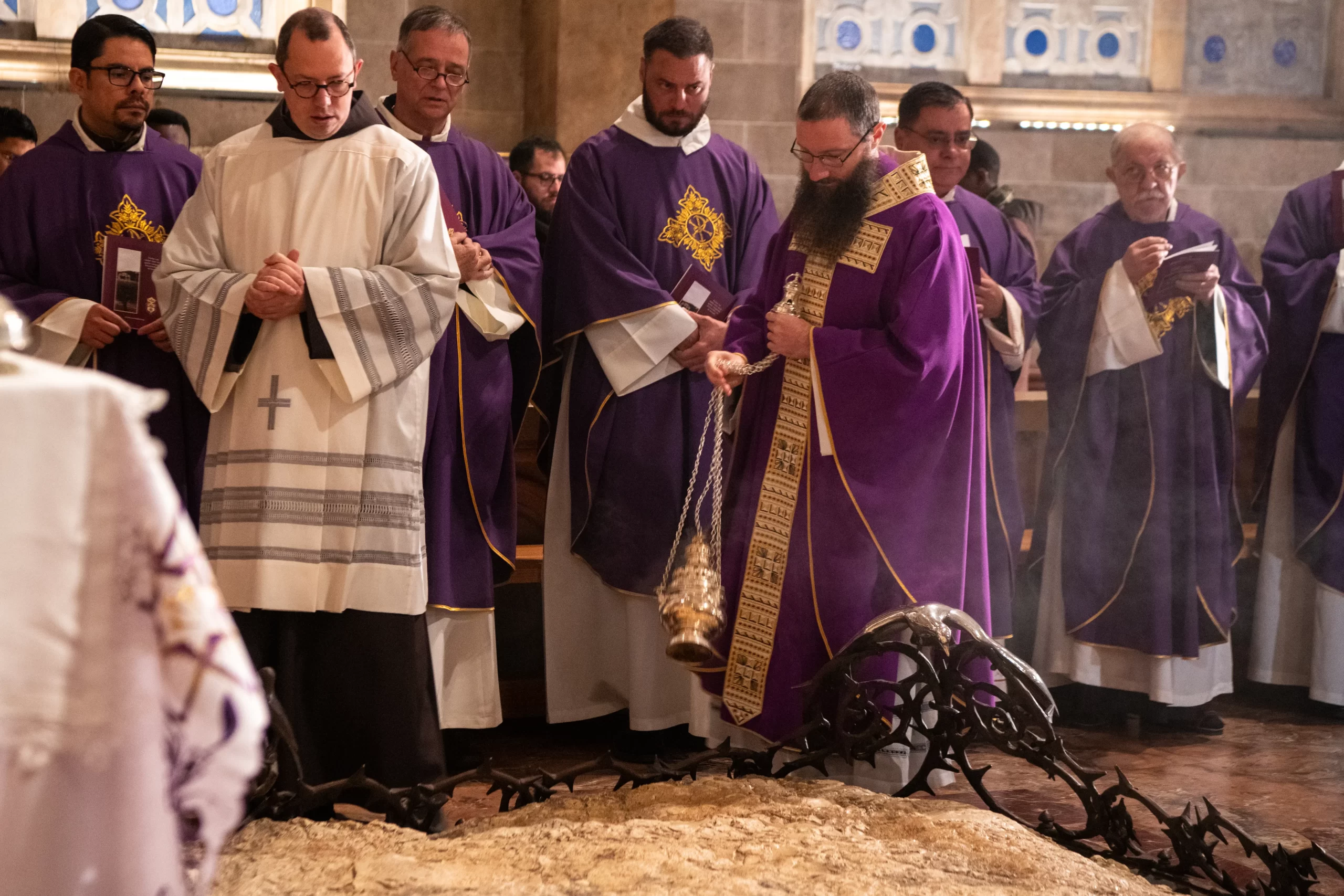
Right here, on the morning of Holy Wednesday, the Passion according to Luke (Luke 22:14–23:56) is chanted, which narrates the transformation of Jesus’ sweat into “drops of blood falling to the ground” as he was praying. At the moment this event is described, the chronicler and the reader of the Passion venerate the “stone of agony” at the center of the presbytery.
Father Alessandro Coniglio, who presided over the Mass, emphasized to CNA that “the mystery of the blood of Christ is at the heart of Holy Week. In the Old Testament, blood is the sign of life: Jesus giving his blood signifies the gift of his life for us and our redemption.”
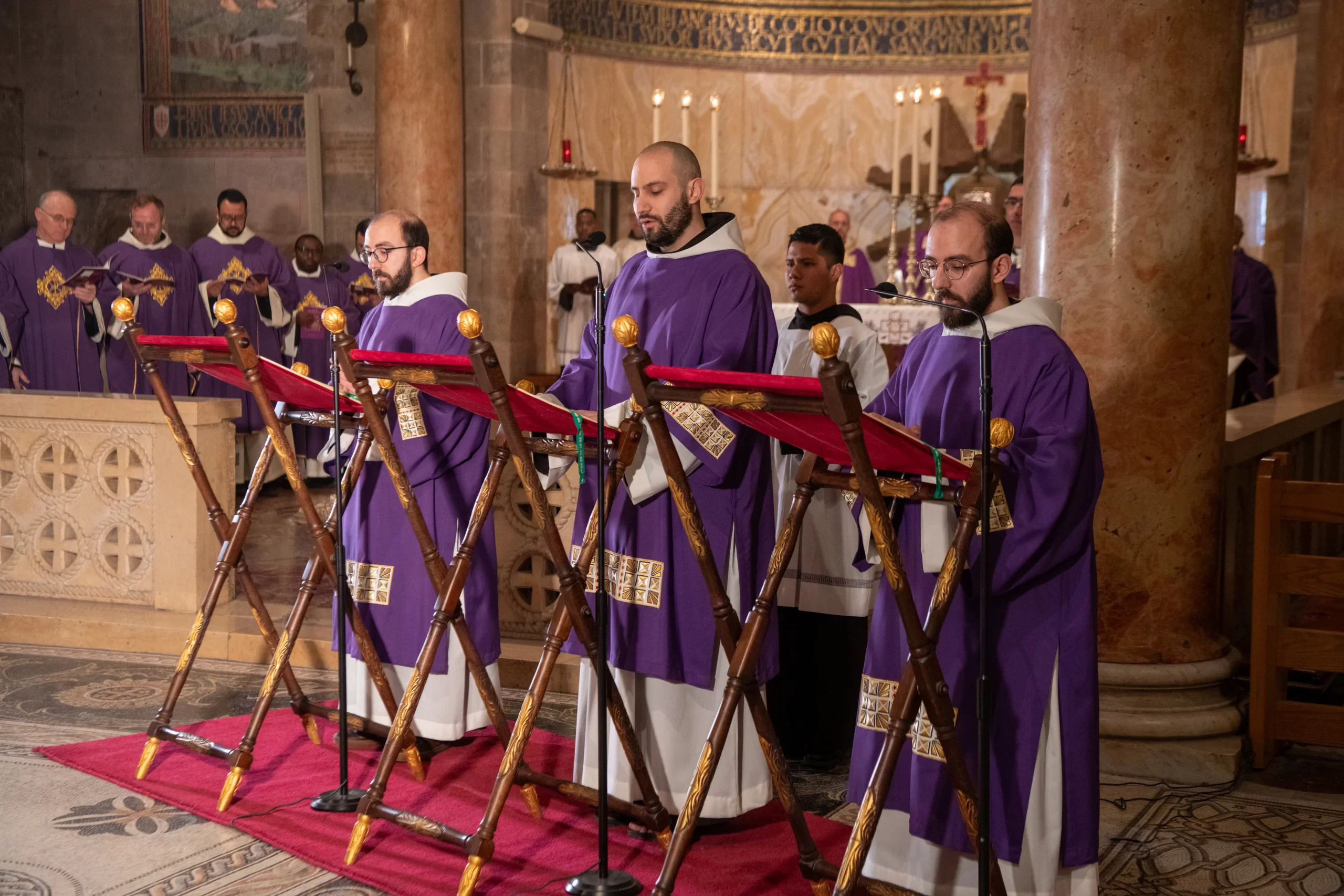
The other stone venerated is the column of the Flagellation, whose base is now preserved in the Chapel of the Apparition (of Jesus to his mother) at the Holy Sepulcher, belonging to the Franciscans. Tradition says that while Jesus was being struck by the scourge, the column to which he was bound became stained with his blood.
“During the Byzantine era, this column was kept in the basilica of Hagia Sion (Holy Mary in Zion) on Mount Zion in Jerusalem,” Franciscan friar Stéphane Milovitch, president of the Holy Sepulcher community and director of the Cultural Heritage Office of the Custody of the Holy Land, told CNA.
Already in the fourth century, the Spanish pilgrim Egeria in her diary spoke of this column and recounted that the veneration, at that time, took place at dawn on Good Friday at the Cenacle (upper room).
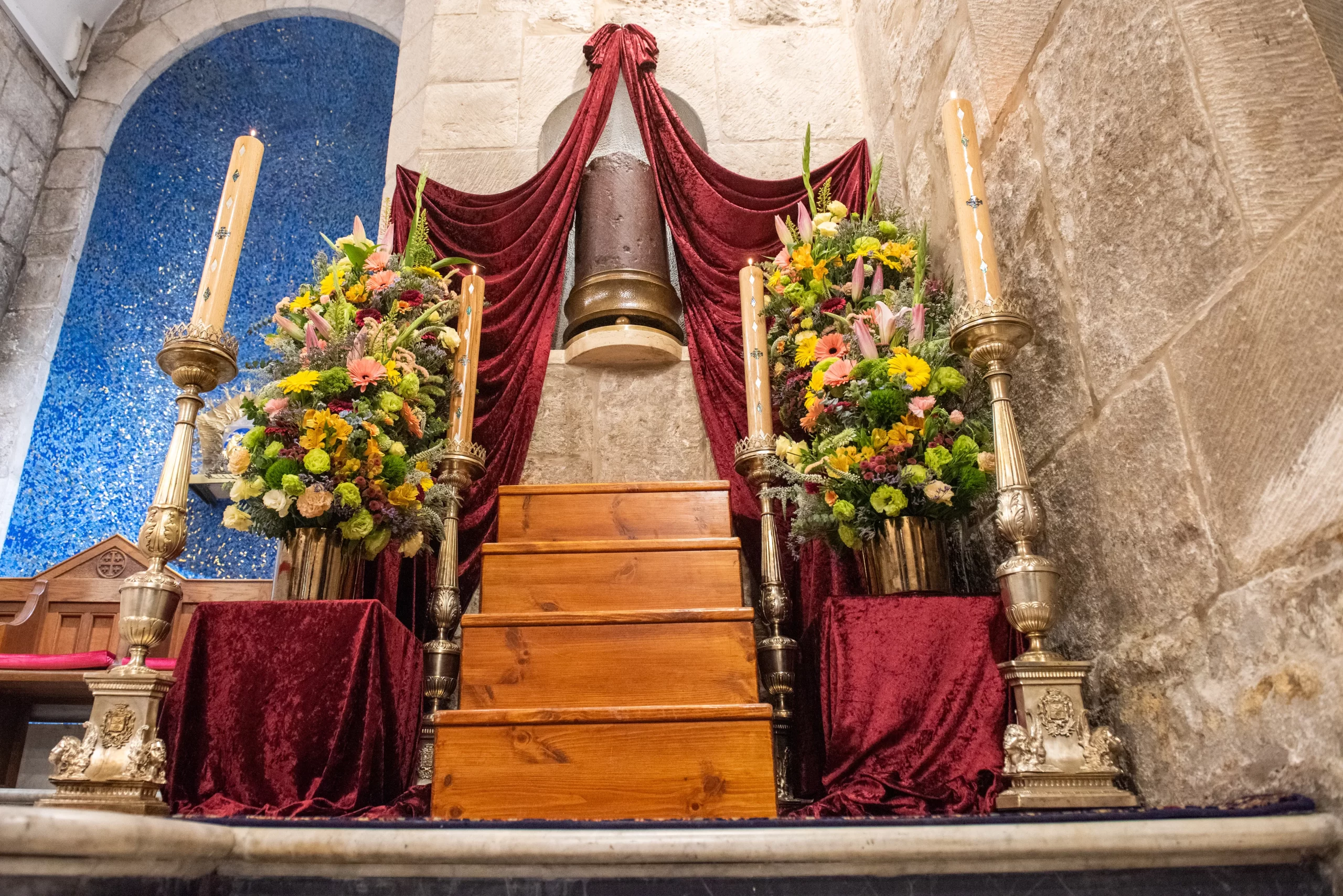
After the destruction of the Byzantine basilica, the traces of the column were lost, but it reappeared in the 14th century at the Holy Sepulcher, where it is still visible today in a niche next to the altar in the Chapel of the Apparition.
“The pilgrim Felix Fabri, a German Dominican who arrived here in the late 1400s, speaks of three columns of the Flagellation,” Milovitch recounted, “one at the Holy Sepulcher, one at Santa Prassede in Rome, and one in Lyon, France, of which the memory has been lost today. These are very ancient traditions.”
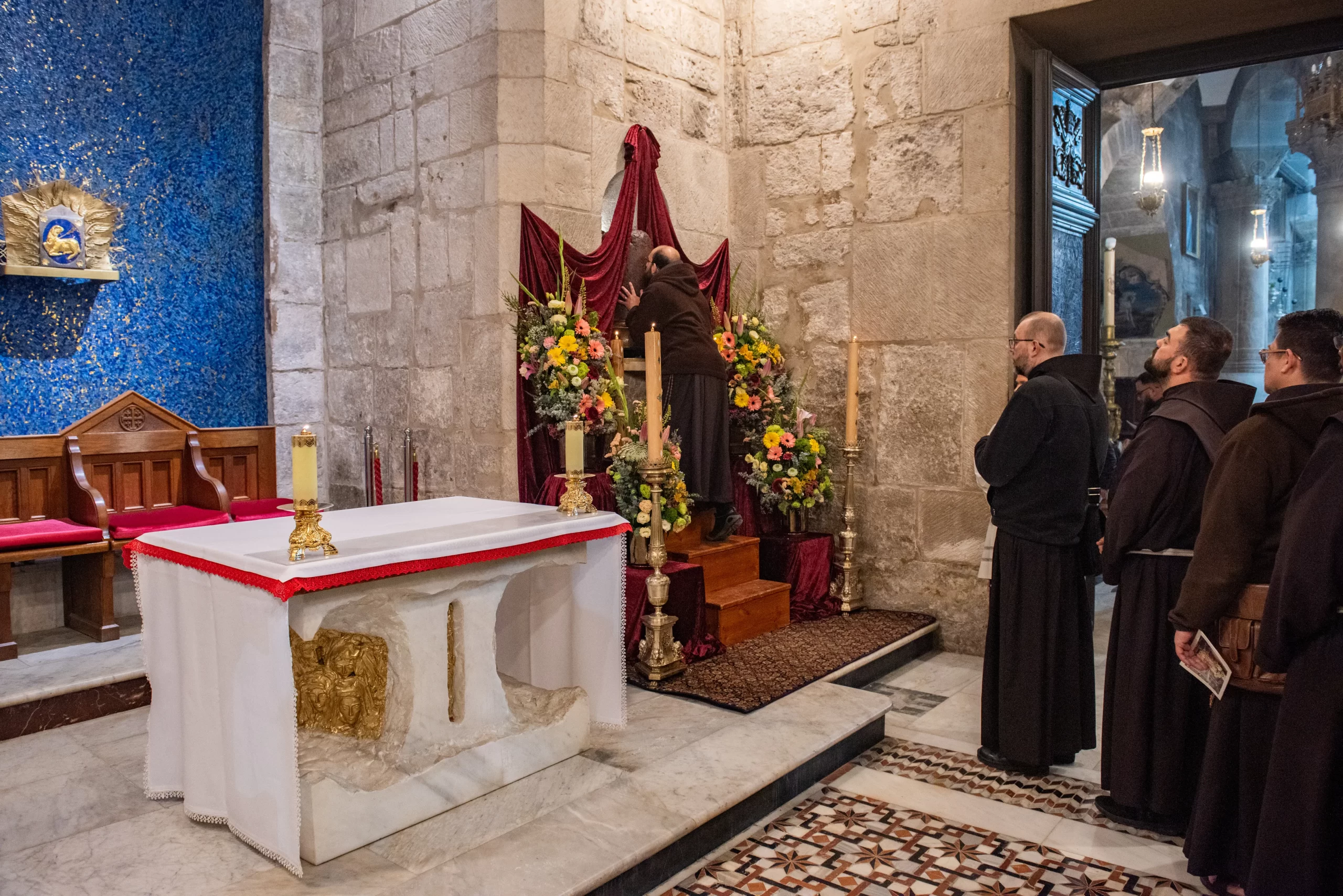
In front of the red porphyry column, surrounded by drapes and ornaments on this day of remembrance, the friars prayed the station dedicated to the column during the daily procession that the Franciscans undertake inside the Basilica of the Holy Sepulcher. At the end, they intoned the hymn “Columna Nobilis” and then, one by one, performed an act of veneration.
In the afternoon, members of other Christian churches — Greek Orthodox, Armenians, and Copts — also arrived to venerate the column of the Flagellation.
